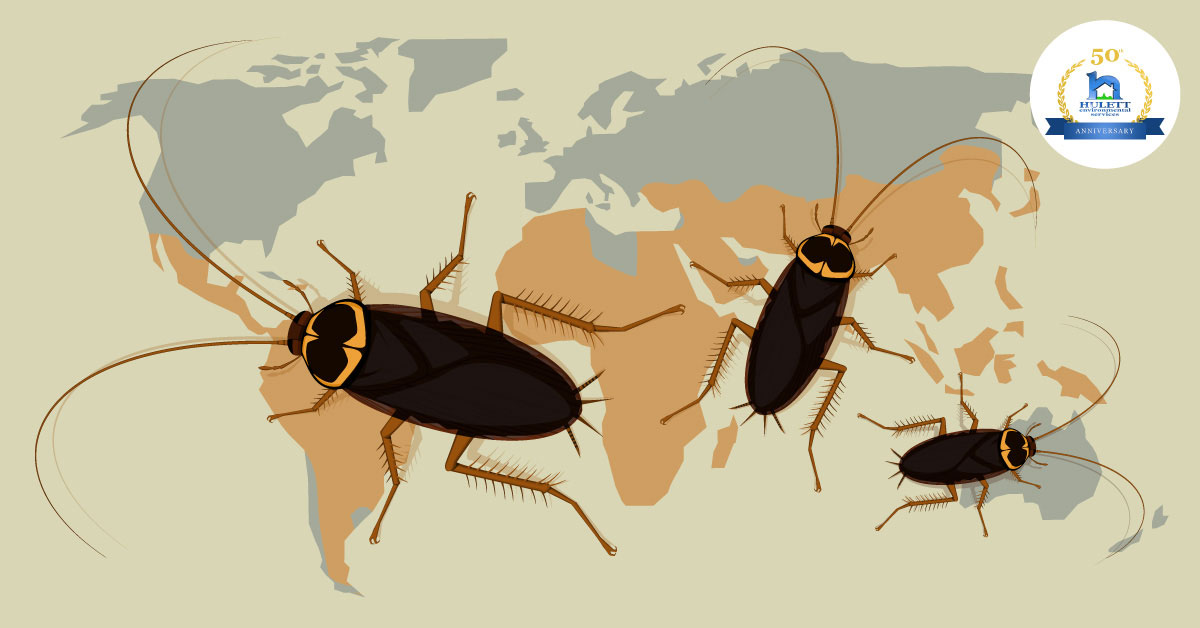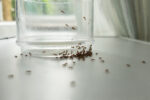
Cockroaches: What You Need to Know but Did Not Want to Ask
In a world where cockroaches live in the wild, you might say, “Wow they’re interesting creatures,” however, when a cockroach, a known carrier of diseases, runs across your floor or kitchen cabinet, you’re probably thinking, “not so interesting.” While most South Florida residents cringe at the sight of cockroaches and want nothing but to see less of them in their homes, preferably none of them, from a scientific point of view, cockroaches are quite amazing creatures. Here are several reasons why:
-
Most species don’t try to destroy your peace of mind by hanging out in your home
Of the 4,600 types of cockroaches that inhabit the third planet from the sun, only about 30 have gone to the dark side and only about four species are most apt to infest South Florida homes. The two most common cockroaches in the US are the small German cockroach, Blattella germanica and the American cockroach, Periplaneta americana.
In the wild, cockroaches live in forest burrows, caves, and brush and dispose of organic waste. It’s only when they decide to come into your home that the trouble begins. Running around scavenging through trash and waste, they spread diseases when they also run through your food. -
Cockroaches have been around for over 350 million years
Thought to have originated during the Carboniferous era, modern cockroaches were dashing around forest floors, disposing of dead plants at the same time the dinosaurs roamed the earth, 200 million years ago. Their ancestors showed up even earlier, some 350 million years ago. Highly adaptable, cockroaches have survived the many geological and atmospheric changes that left other species in the dust or ice, if you will.
-
Cockroaches can stay underwater for forty minutes
One of the reasons cockroaches have been around so long is that they can do the roach-paddle for as long as they need to and can hold their breath for close to an hour underwater. Cockroaches breathe through small tubes in their sides, spiracles, that carry water vapor and regulate water loss. So, trying to drown them is a no-go, unless maybe you use really hot water. Some DIY accounts suggest that soapy water will kill cockroaches, as well. Perhaps they just can’t handle cleanliness.
-
Faster than a speeding cockroach
Cockroaches are pretty quick to run for cover when you flip on that kitchen light, but did you know these pests can run 3 miles per hour? In terms of their length to speed ratio, that would convert to 220 mph human length. Those six legs don’t hurt their speed either, but cockroaches can sense changes in air pressure and prepare for threats, like you and that light they really don’t like.
-
Losing their heads, really not a problem in the short term
As horrific as it sounds, cockroaches can live without their heads for a month. As it turns out, cockroaches breathe from their sides and their other functions aren’t dependent on their heads being intact. Since cockroaches can live for a month without food, headless cockroaches can survive until they need water or food. Then, they usually succumb to dehydration or starvation.
-
Food can be almost anything to a cockroach
Speaking of food, cockroaches will eat almost anything. Picky eaters would have been extinct by now. Scavengers by nature, cockroaches are inclined to eat sweets and sugary foods but will eat almost anything including glue, soap, grease, wallpaper paste, book bindings, leather, and hair. They also scurry around in trash bins, sewer pipes, and feast on rodent excrement and then spread germs and bacteria on the food in your cabinets and kitchen, causing Salmonella and other pathogens that they can keep in their digestive tracts for up to a month.
-
If you think you can’t fight them, well, you can
Originating in China, cockroach fighting was introduced in the US in the 1880’s. Reported in an 1886 New York Times article, a group of Chinese sports and gambling enthusiasts toured major US cities, staging cockroach fights that brought in thousands of betting dollars. On the lighter side, Entomology students at Loyola University in Maryland hold Madagascar hissing cockroach sprinting and endurance tests. Cockroach racing in Brisbane, Australia has evolved into a community charity event that has been going on for over thirty years.
-
Cockroach colonies are governed by group decisions
In Dr. José Halloy’s 2006 study in Proceedings of the National Academy of Sciences, he reported that “Cockroaches use chemical and tactile communication with each other.” Halloy, who co-authored the research, said cockroaches can also use vision. “When they encounter each other they recognize if they belong to the same colony thanks to their antennae” that act as highly sophisticated olfactory organs. Testing his group behavioral theory, Dr. Halloy placed 40 cockroaches in a dish containing three shelters. After much consulting with each other through antennae mail, the subjects divided themselves into two equal groups and left the third shelter unoccupied.
-
Cockroaches don’t survive well outside of their colonies
Cockroaches prefer to live in multi-generational nests, ranging in size from just a few members to a few dozen or so. Research shows that cockroaches who don’t interact with others in their colonies often, show signs of illness and an inability to mate.
At Hulett, while we appreciate these amazing facts about cockroaches, we realize the stress and inconvenience these pests can cause homeowners. Our Healthy Home programs guarantee to get your South Florida home back on track and your peace of mind intact. Contact Hulett for a free pest inspection and watch cockroaches do a real disappearing act! Just call Hulett!



